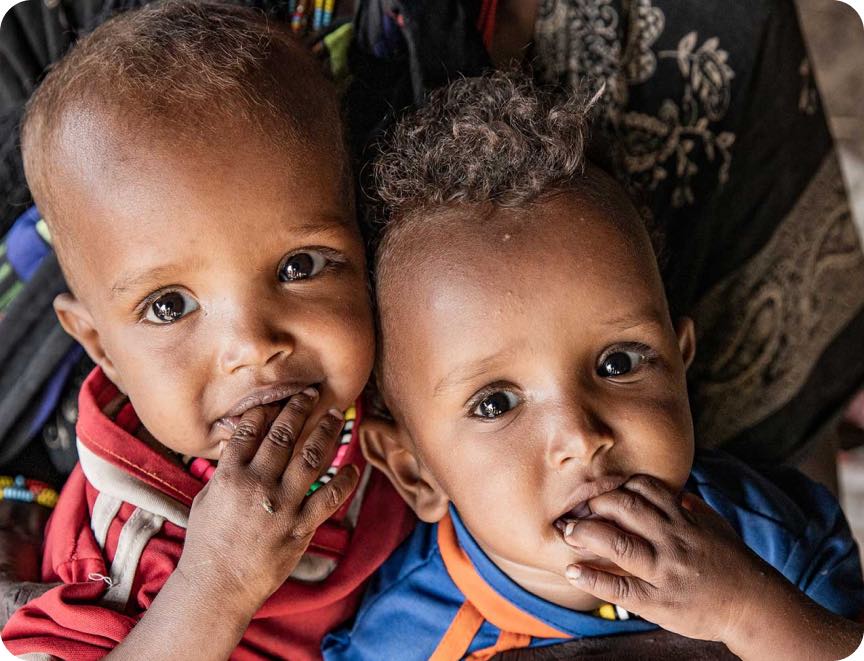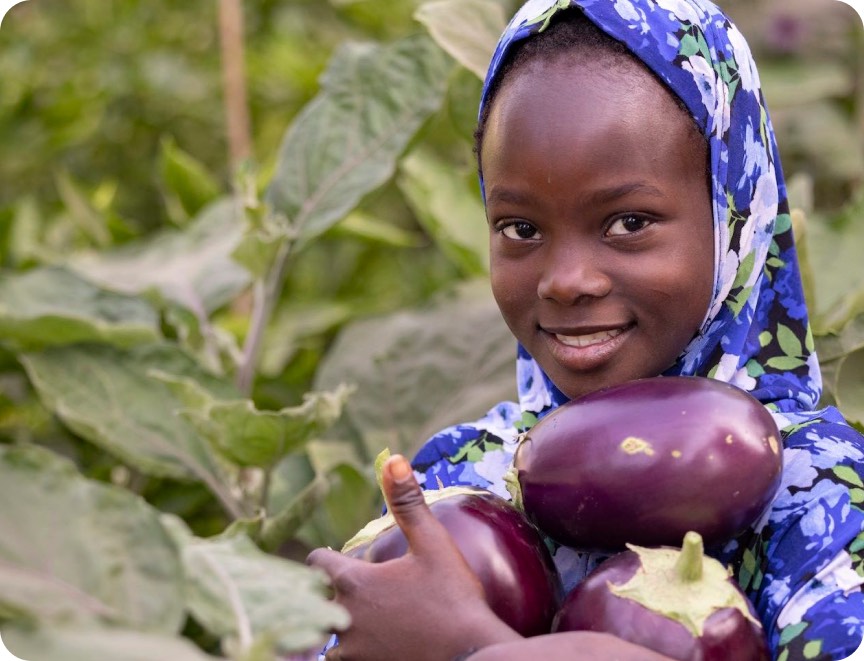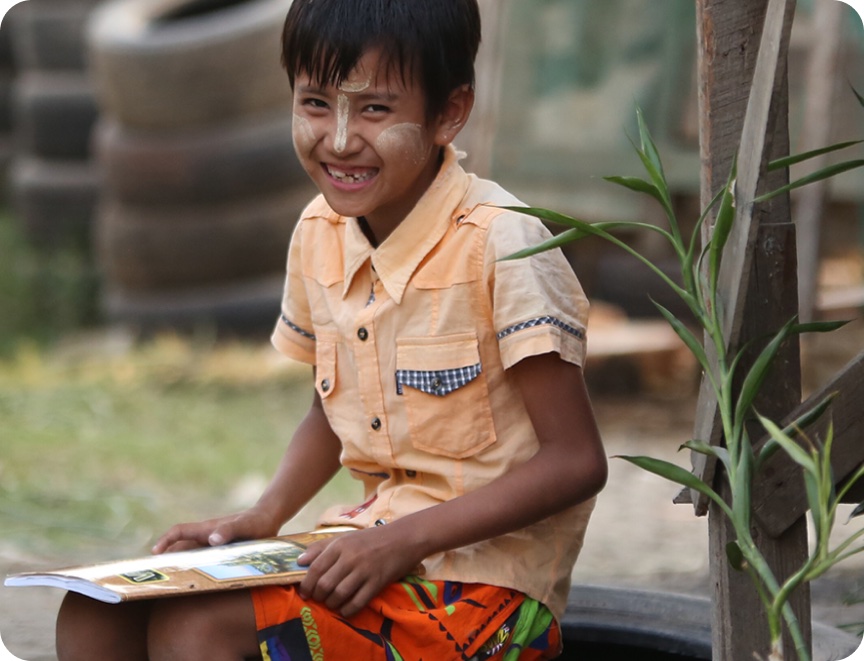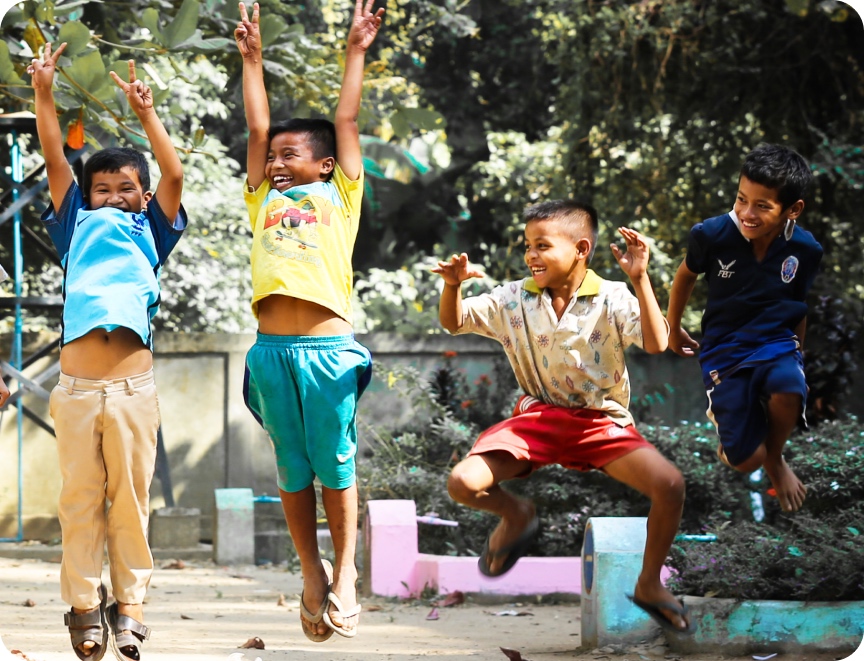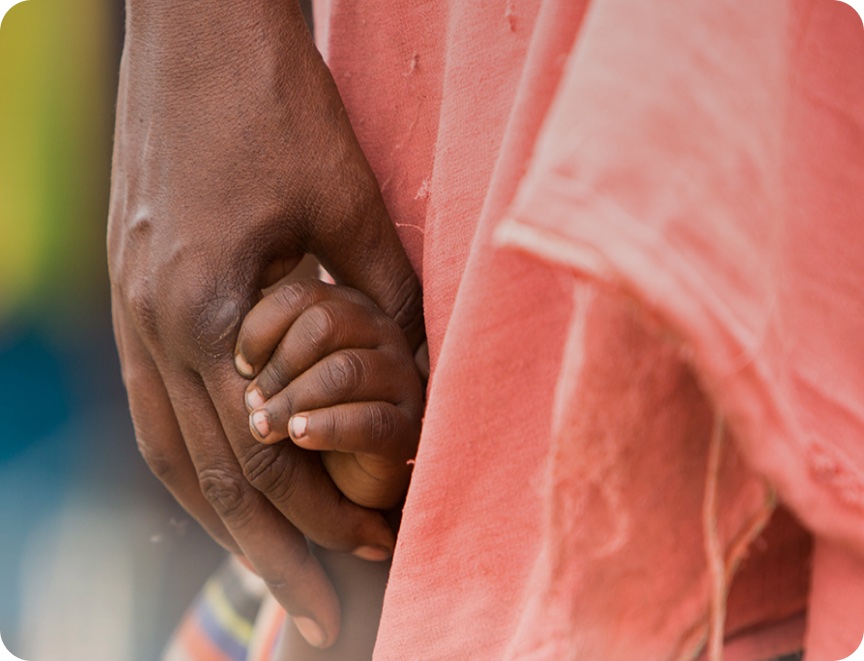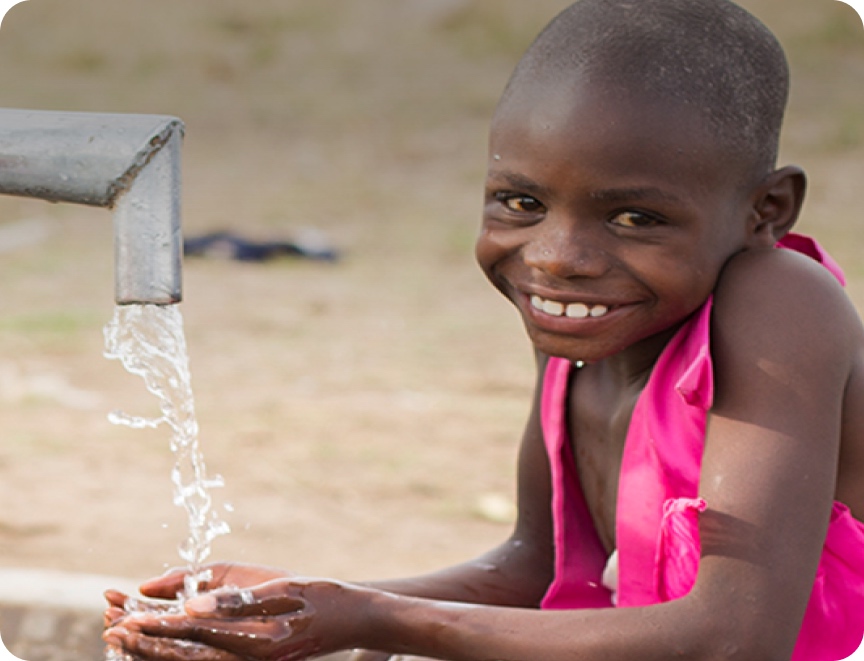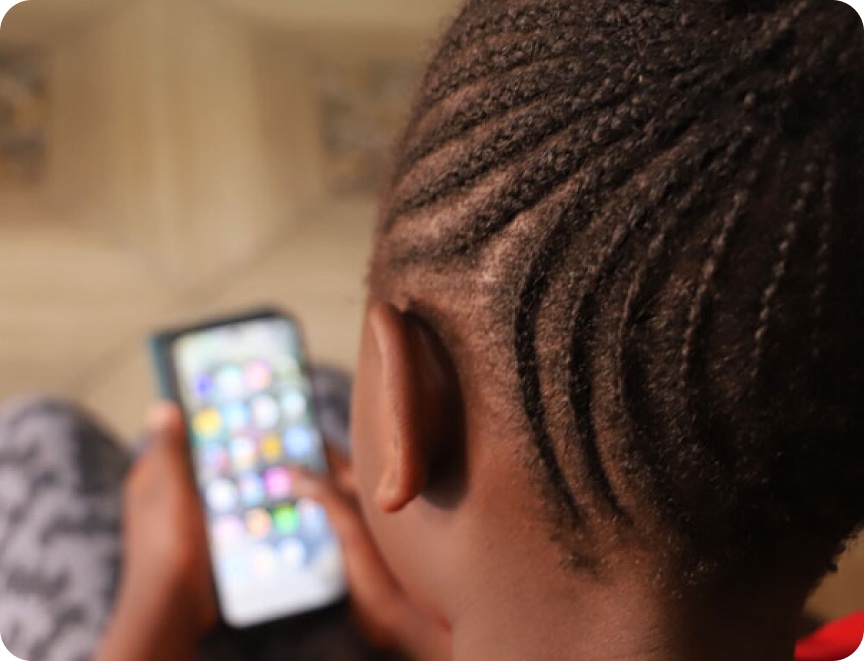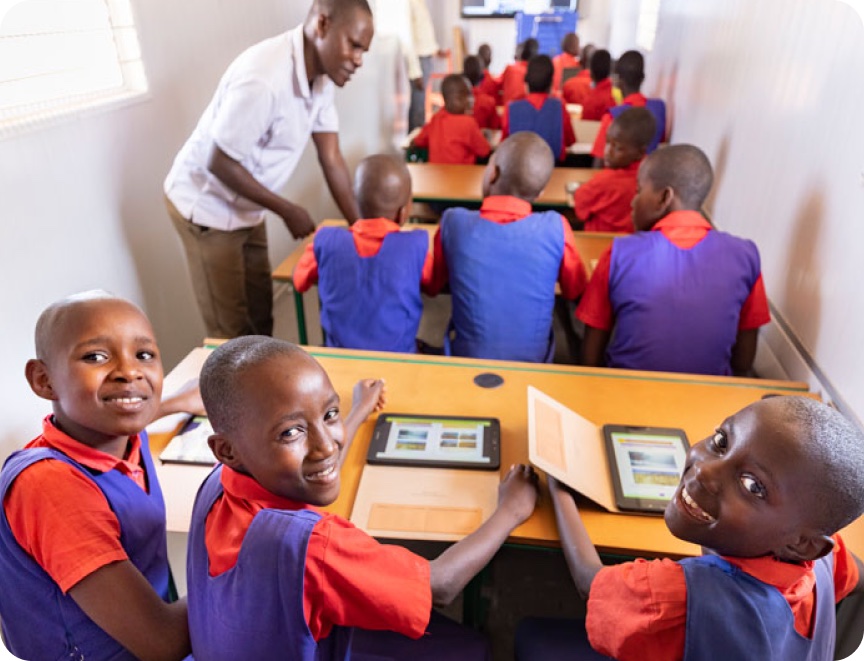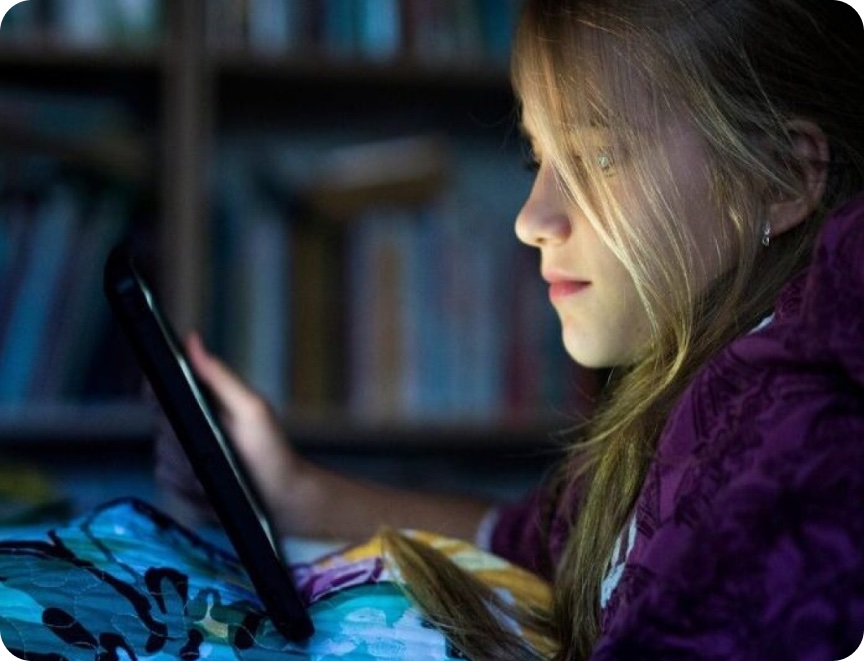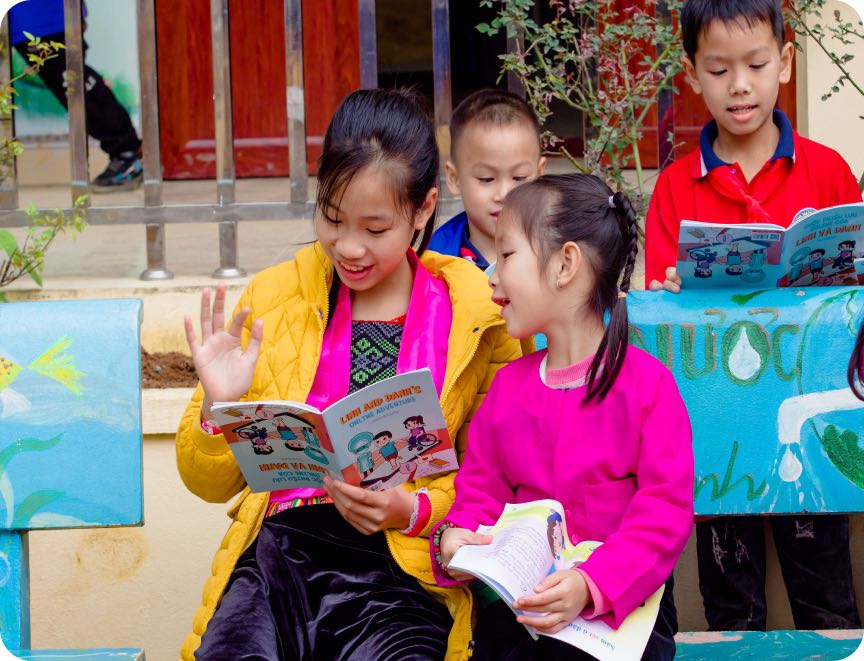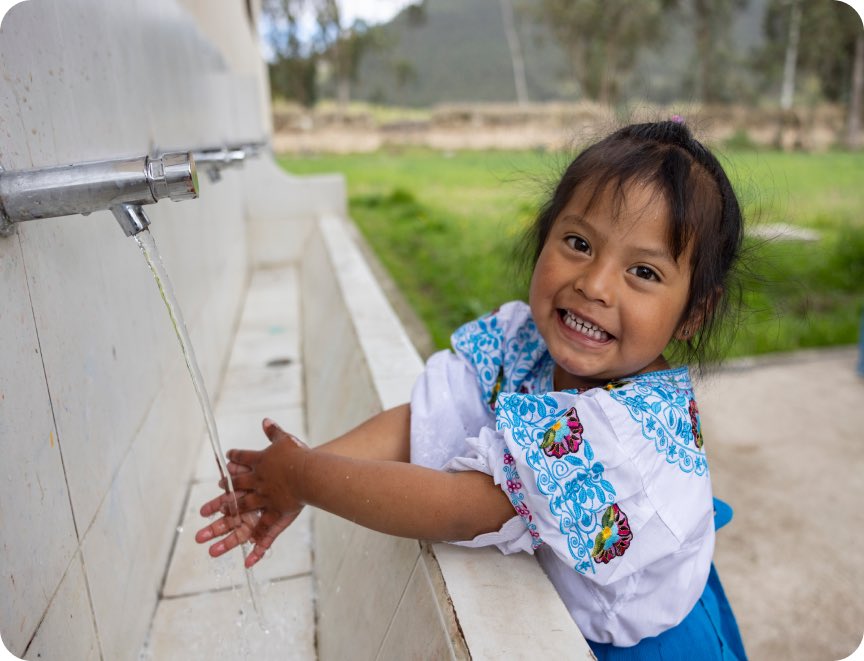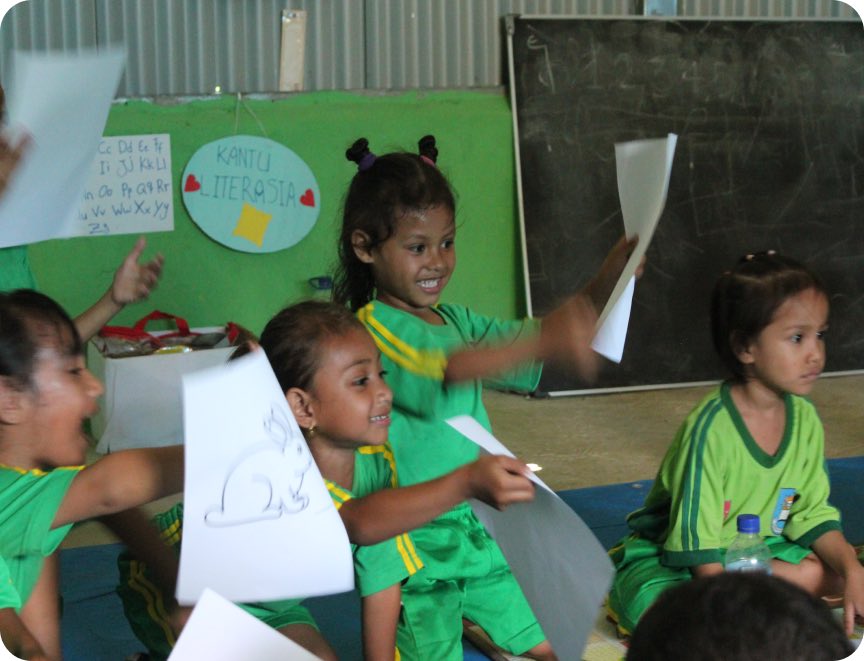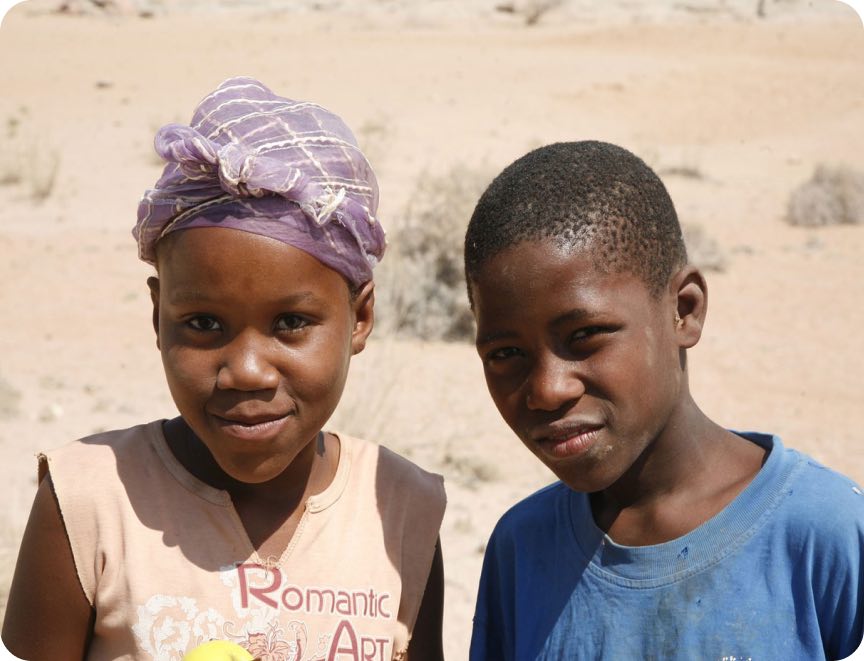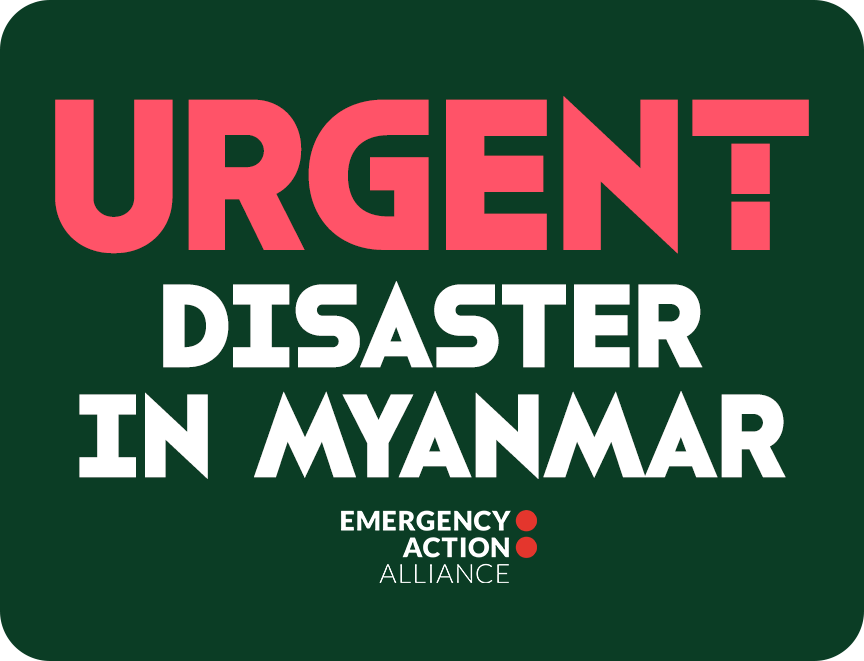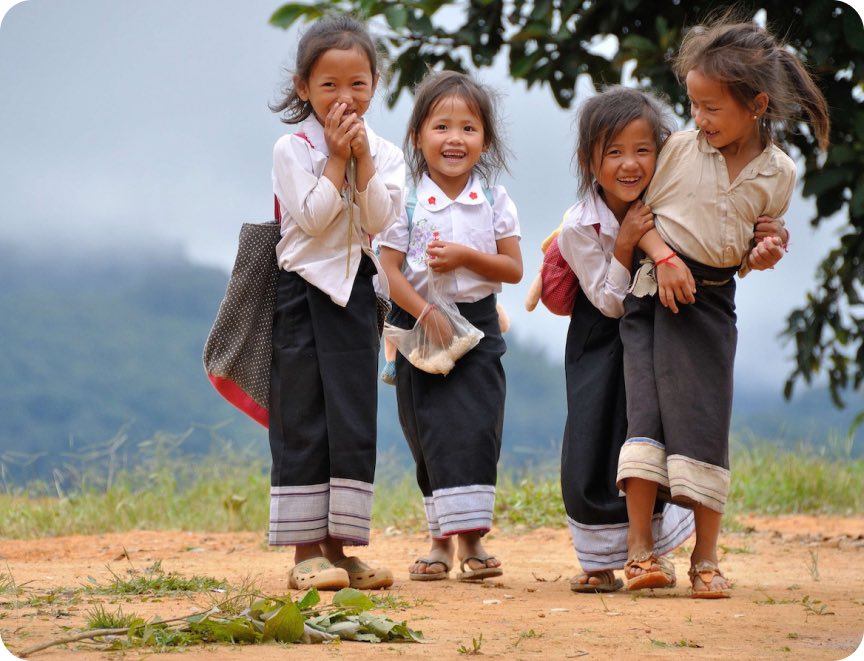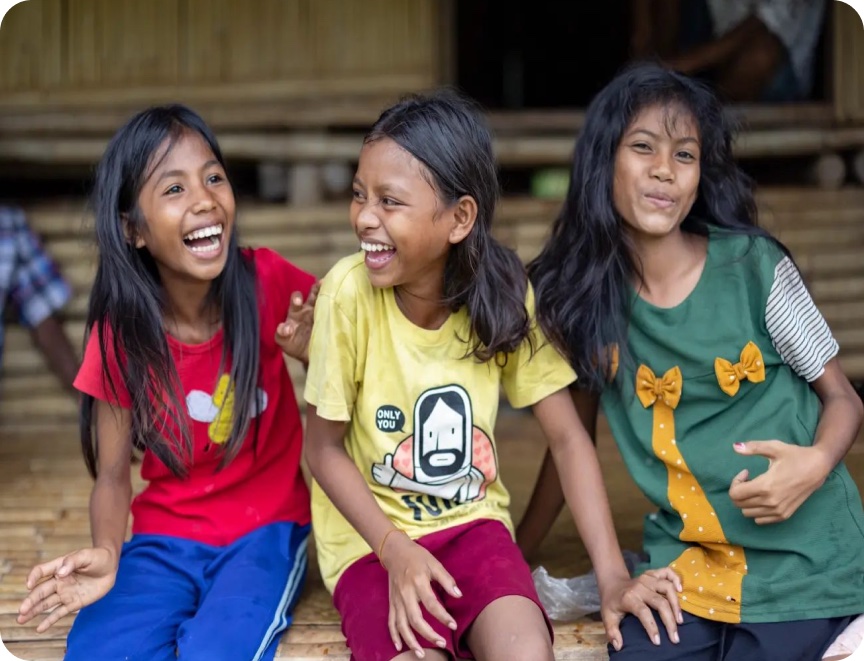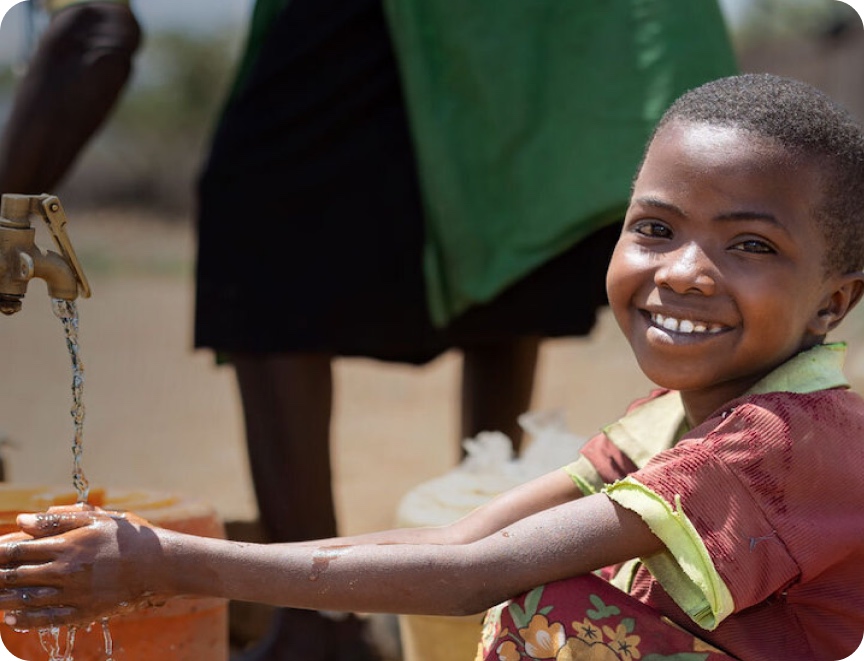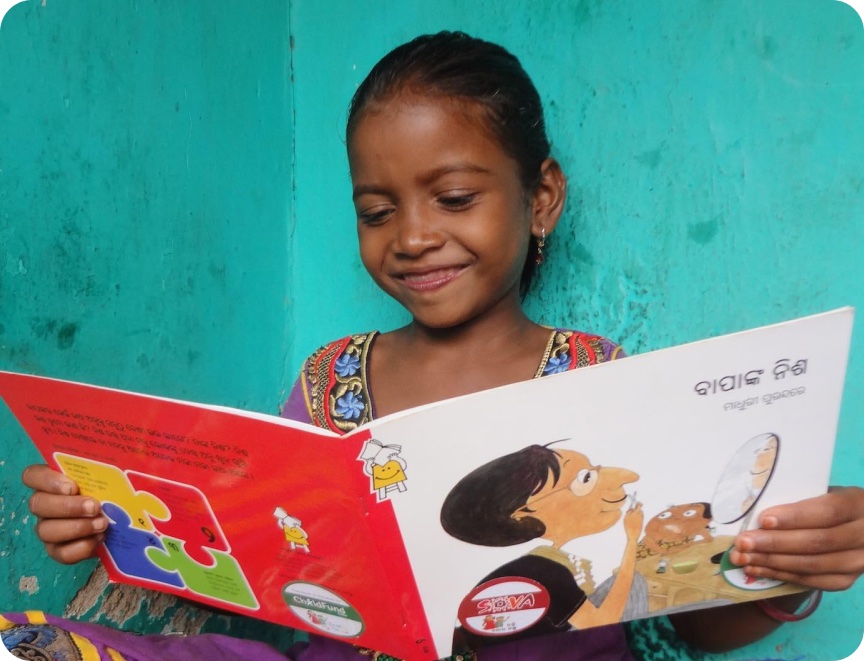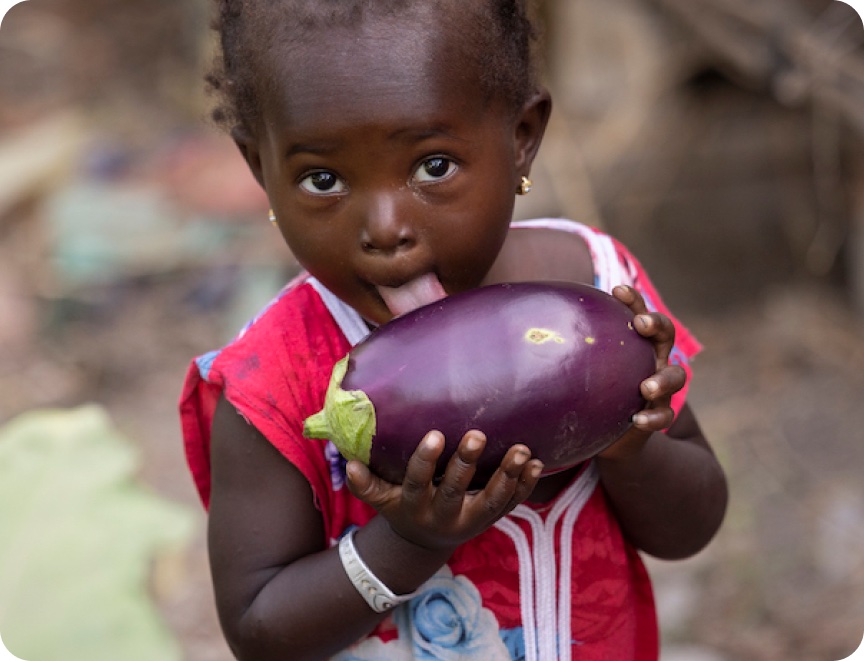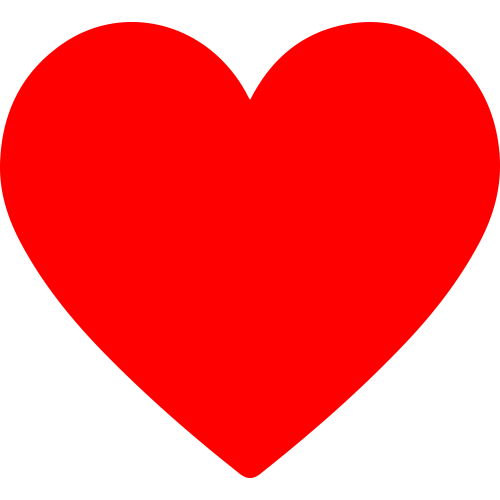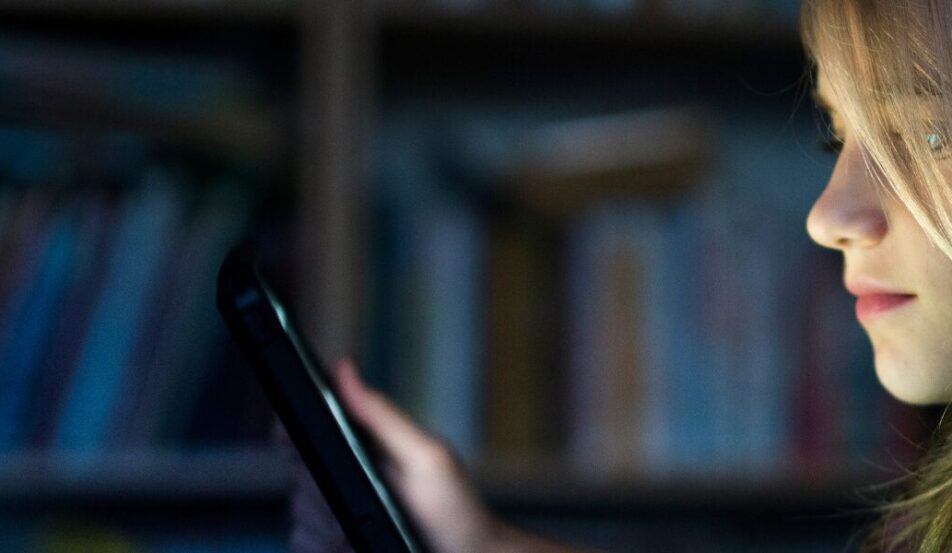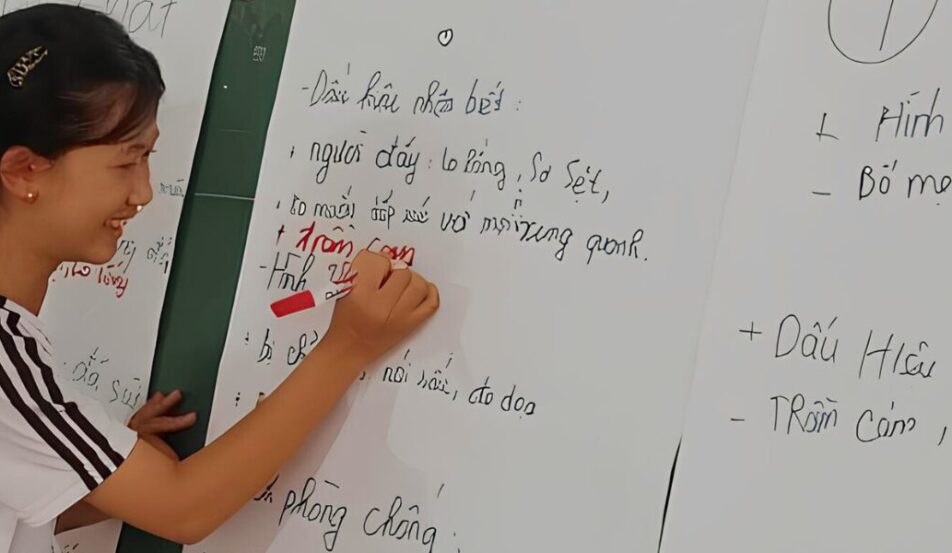What is Child Protection?
Violence against children can shatter a child’s existence. Not only can it disrupt children’s daily lives, but also strip them of their dignity and right to education, physical and mental health, and a safe transition into adulthood.
At ChildFund Australia, the safety and wellbeing of children is paramount. Our aspiration is for every child to be able to say, “I am safe. I am educated. I contribute. I have a future.”
We’re working with our partners, local NGOs and communities around the world to help advocate for and protect the rights of children and young people so they can grow up healthy, happy and safe. This includes protecting them from violence, exploitation, abuse, and neglect as outlined by the UN Convention of Child Rights.
Here are just some of the ways we’re putting the interests and safety of children first:
- Supporting communities in building effective child protection systems, with specialised projects for vulnerable and high-risk groups of children and youth;
- Providing emergency humanitarian assistance in times of natural disaster and conflict, such as setting up Child Friendly Spaces where children have a safe place to play, learn and receive trauma support;
- Initiatives to prevent and respond to family violence, and;
- Programs and applications to improve digital literacy to protect children and youth online.
Keep reading to learn more about child protection and ChildFund Australia’s contribution to protecting the rights and wellbeing of children and young people. We also share what you can do to help protect children.
Understanding child protection
Child protection functions to protect the fundamental rights of children, including their right to safety, freedom from violence and a stable family environment (UN General Assembly 1989). It requires appropriate and targeted measures, such as effective policies and legislation, and structures to be put in place to prevent and respond to abuse, neglect, exploitation, trafficking and all forms of violence against children. It also means bringing together all the necessary stakeholders and systems – education, health, welfare, justice, civil society, community and family – to ensure every child grows up in a safe and supportive environment.
Glossary
Child protection: ChildFund Australia understands child protection as preventing and responding to violence, exploitation, abuse and neglect of children.
Child: The United Nations Convention on the Rights of the Child defines a child as “a human being below the age of 18 years. Biologically, a child is anyone between birth and puberty or between infancy and adulthood. ChildFund Australia generally refers to children as those below 18 years.
Child protection systems: Certain formal and informal structures, functions and capacities that have been assembled to prevent and respond to violence, abuse, neglect and exploitation of children.
Community-based child protection mechanisms: Groups, networks of people or community managed arrangements that support the protection and well-being of children both in normal times and in emergencies, who are at risk (prevention and/or response and mitigation). Examples include:
- Child Welfare Committees;
- traditional courts;
- faith-based groups that support vulnerable children;
- youth groups that work to prevent children from abusing drugs and alcohol;
- extended families or communities looking after each other; and
- Safe spaces for children that provide an opportunity for them to share and exchange experiences and receive support.
- Community managed child centred spaces (CCS) or other protective arrangements/ groups in time of emergencies.
Child labour: Work that is mentally, physically, socially or morally dangerous and harmful to children; and/or interferes with their schooling (International Labour Organisation).
Child abuse and neglect: All forms of physical and/or emotional ill-treatment, sexual abuse, neglect or negligent treatment or commercial or other exploitation, resulting in actual or potential harm to the child’s health, survival, development or dignity in the context of a relationship of responsibility, trust or power (World Health Organisation).
Child violence: All forms of violence against people under 18 years old. For infants and younger children, violence mainly involves maltreatment (i.e. physical, sexual and emotional abuse and neglect) at the hands of parents and other authority figures (World Health Organisation).
Human trafficking: A global crime that sees traffickers (organised networks or individuals) use “force or other forms of coercion, abduction, fraud or deception for the purpose of exploitation” (United Nations).
Current issues in child protection
Globally, nearly one billion children experience some form of emotional, physical or sexual violence every year; and one child dies from violence every seven minutes. Millions live in fragile and conflict-affected areas where child rights are often denied, and childhoods are stolen by violence, abuse and exploitation. It happens in the places children should be most protected – their homes, schools and communities. Today, some of the biggest issues in child protection include:
Child Labour: For the first time in two decades, child labor exploitation has increased globally. An estimated 160 million children are engaged in child labor, with 79 million children working in hazardous and dangerous conditions. Child labour is particularly widespread in sub-Saharan Africa, where nearly a quarter of children are working. Research shows that progress in the fight against child labour has stalled. Nevertheless, around the world countries, including Nigeria, have reaffirmed their commitment to eradicate child labour by 2025, in line with the Sustainable Development Goals (SDGs). Australia has committed to international standards on child labour and stamping out violence and harassment at work.
Human Trafficking: There are more than 40 million human trafficking victims worldwide, including men, women and children trapped in forms of modern slavery: from forced labour to sexual exploitation. More than half of child trafficking victims are trafficked within their own country according to a report by the International Organization for Migration (IOM).
Online Abuse: One of the pressing issues today is the rise in online child abuse and exploitation. With increased internet access, children are more vulnerable to online predators. According to a recent report, more than 300 million children a year are victims of online sexual abuse and exploitation.
Global Crises: Climate Change and the COVID-19 pandemic have exacerbated pre-existing structural inequalities and challenges (think poverty, displacement, violence against women and girls and loss of education). The World Bank estimates that climate change, a ‘threat multiplier’ for violence against children, could push up to 132 million people into extreme poverty by 2030. They also reported that COVID-19 increased global poverty, with 100 million more children plunged into poverty as a result of the crisis.
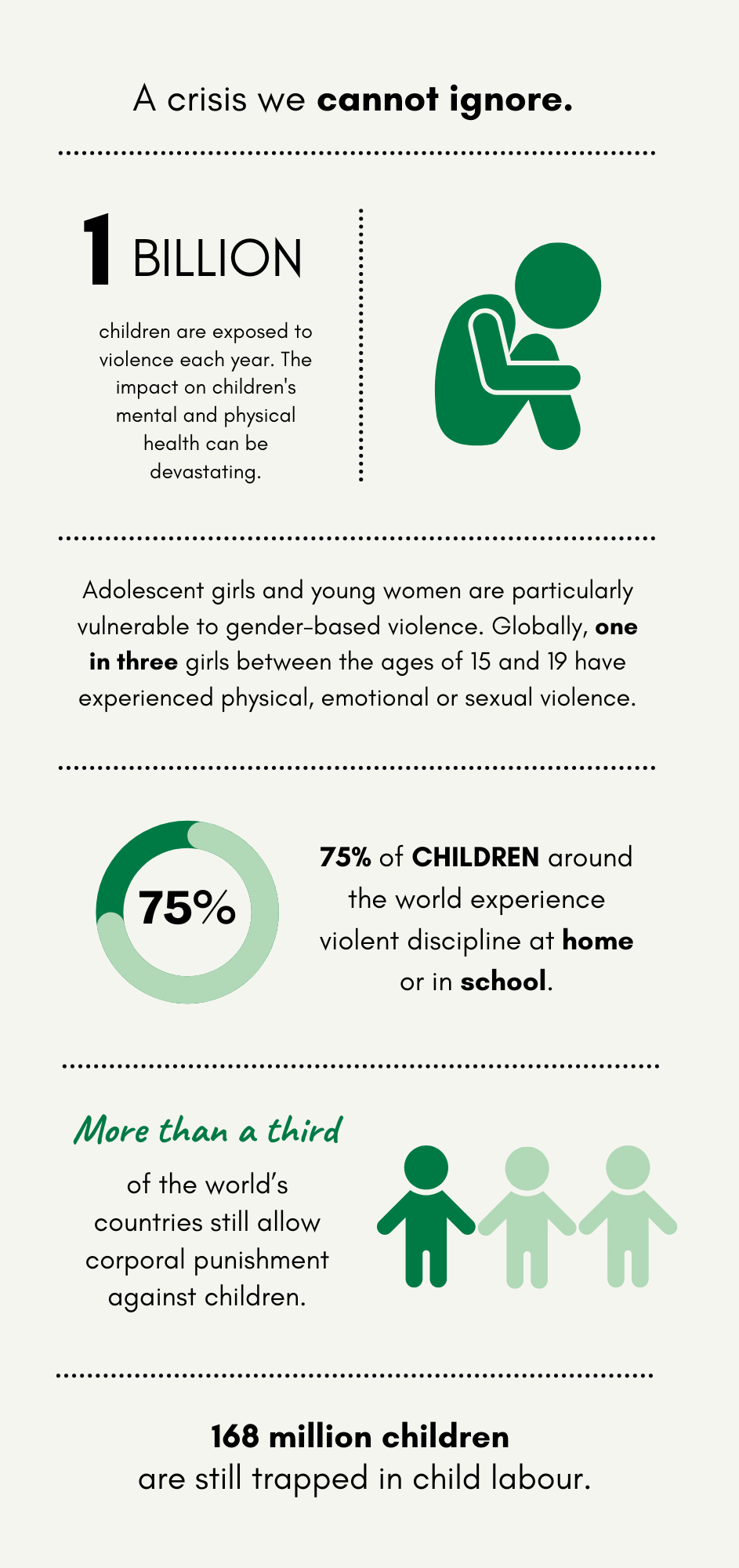
Why child protection is important to ChildFund Australia
Child protection is part of our vision of “a global community free from poverty, where children are protected and have the opportunity to reach their full potential”. ChildFund Australia works in partnership with children and their communities to create lasting and meaningful change by supporting long-term community development and promoting children’s rights – child protection is a fundamental human right.
How ChildFund Australia contributes to child protection
To deliver on our vision of a world where children can enjoy a childhood free from harm, and accelerate our work to build safer communities for children, we’ve implemented specific targets, with a strong focus on new and emerging threats in the digital environment, to reduce violence against children, which has been the cornerstone of ChildFund’s Free From Violence campaign. All our programs, policies and practices are guided by the key principles of child protection – safety, wellbeing and the rights of children.
In 2023, we reached 64,694 children and young people through 18 child protection programs across Asia and the Pacific. Child protection services supported by ChildFund, including helpline, referral and counselling services, were used by 33,365 people.
Our child protection programs promote the participation of children in community life, strengthening their safety (online and offline), and advancing their rights, so that all children, regardless of their birthplace or status, have access to the same essential opportunities. They focus on education, health, and community development in the areas in which we work.
ChildFund Australia’s child protection program aims to strengthen the protective environments of children and young people to keep them safe from harm. Projects are implemented across Cambodia, Myanmar, Papua New Guinea, the Solomon Islands, Timor-Leste and Vietnam. Interventions include strengthening formal and community-based child protection mechanisms, improving case management systems and referral pathways, and working with families to develop their child protection skills and knowledge. We also support national helplines in Vietnam and Papua New Guinea. You can support our child protection work by donating.
Child protection in action
Youth join forces to stop abuse
Thi*, a young girl in Vietnam, is passionate about keeping children and young people in her village safe from violence. Unfortunately, physical abuse is commonly used as a method of punishment in her community.
“I have witnessed many acts of violence where I live. In the past, when I saw someone abusing children, I sometimes told my mother. Sometimes I didn’t do anything, or I just ignored it,” said Thi.
ChildFund Vietnam is working with children and young people in the community to help them learn about child protection risks and how they can stay safe from different types of abuse. In one village a group of 30 young people are taking charge. Read more.
Breaking the silence on childhood violence
Violence has long been seen as an effective parenting strategy in Cambodia. When children’s parents are away at work, they are, for example, left in the hands of neighbours or elderly community members who may use violence against them. Due to this long-standing belief and cultural norms, experiences of child abuse incidents have traditionally been kept under wraps. Keeping silent about abuse has been a way of saving face (to prevent prejudice or a negative public perception of their families) – until now. Read more
Learning to stay safe online
In Laos, children and young people like Phouthdavanh, 14,are learning to protect themselves in this digital age through ChildFund’s online safety training. Phouthdavanh has been a youth trainer in her community for two years. She is part of a new wave of young people across Laos taking action to protect their rights and wellbeing and create a more positive future. Read more
Protecting children: methods and strategies
When it comes to the safety and wellbeing of children, there are various ways to ensure that their best interests are being met. They include:
- Education: Providing children, professionals, parents and caregivers and their communities with the tools and resources to effectively identify signs of potential harm and respond to allegations of abuse. ChildFund’s Swipe Safe program and app delivers online safety training and resources to students, so they have the skills and knowledge to safely navigate the digital world.
- Services and legislation: Supporting health services and robust legal frameworks to help protect the rights of children and holding those who have harmed them accountable. ChildFund-supported child protection helplines in Vietnam and Papua New Guinea are helping to reach more communities and enhance their ability to report and respond to violence, and keep children safe.
- Engaging different stakeholders: Families, communities, governments and NGOs all have a role to play in helping to protect the safety and wellbeing of children and young people. Recently, ChildFund Australia hosted a discussion at Parliament House in Canberra with child rights advocates, parliamentarians, and online safety experts to explore practical solutions and legislative changes required to keep children safe online and create positive online experiences.
- Child safeguarding policies and procedures: ChildFund Australia has strict policies in place to ensure our representatives, operations and activities do no harm to children. They focus on protecting children identified as suffering or likely to suffer significant harm and include child protection procedures which detail how to respond to concerns about a child.
The future of child protection
All children deserve a childhood free from violence, one where they are treated with respect and dignity and feel supported and cared for by their families, caregivers and the broader community. Yet, these fundamental rights are still not afforded to millions of children worldwide.
How you can help protect children
There are many ways you can help protect children’s safety and wellbeing. Here are just a few of the ways you can make a difference today:
- Donate: When you donate to one of our appeals or child protection programs, you’re helping to protect children’s rights and give them better futures. You can provide much needed resources and support to some of the world’s most vulnerable children and young people.
- Fundraise: Host an activity or event to raise much-needed funds for a child protection cause and/or organisation of your choosing. This can be as simple as setting up a “Go Fund” Facebook page.
- Volunteer: You can help protect young lives here in Australia by assisting local charities and organisations in their mission to keep kids safe.
- Speak out: Become an advocate for child rights in your local community and talk to your local government representatives to help influence legislative change.
FAQs About Child Protection
ChildFund Australia understands child protection as preventing and responding to violence, exploitation, abuse, neglect and other harmful practices against children.
In Australia, state and territory governments are responsible for statutory child protection. Relevant departments support vulnerable children who have been, or are at risk of being, abused, neglected or otherwise harmed, or whose parents are unable to provide adequate care or protection (AIHW).
A network of essential stakeholders and systems – education, health, welfare, justice, civil society, community and family – working together to prevent abuse, exploitation, neglect and other forms of harm against children and to protect and assist children in these situations. They provide care to the most vulnerable, including children uprooted by conflict or disaster; victims of child labour or trafficking; and those who live with disabilities or in alternative care (UNICEF).
A child who is at risk of being, or is being, or has been abused or neglected. According to the EU Charter of Fundamental Rights, it includes children or young people without a parent, guardian or caregiver who can assume parental responsibility for their safety and wellbeing, nor is willing and able to protect them from abuse or neglect or the risk of abuse or neglect.
You can learn more about ChildFund’s child protection initiatives and policies here.
*Names have been changed to protect individuals’ identities.


